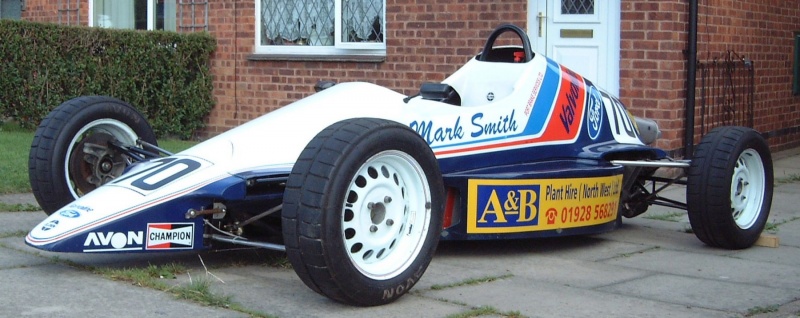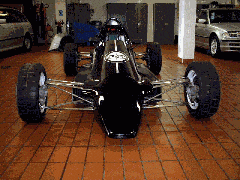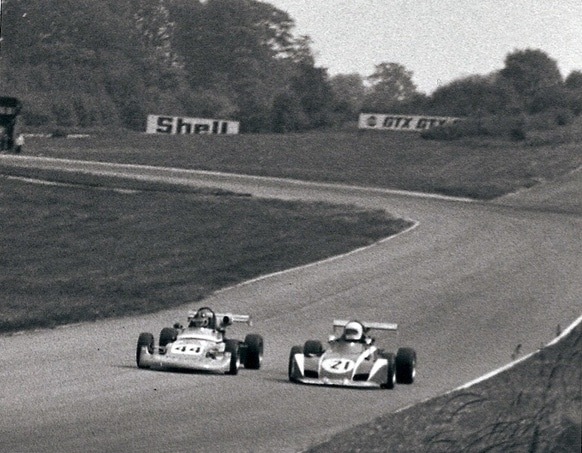The Elden Story
Further and Faster
During 1972, the Volkswagen sponsored Formula Super Vee was lacking some excitement in the UK, with only two constructors building cars and running less than full grids. Volkswagen asked Elden to build a car with VW providing the required parts. The deal was agreed and the prototype Mk14 was built in twelve weeks, with GP Metalcraft building the tubs and John Gillmaster producing the bodywork to Elden’s patterns. Mark Litchfield agreed to buy the first car with his business partner, Roger Manning, undertaking the test program.
Brian takes up the story:
“So we arrived at Brands Hatch one miserable, damp, morning and unloaded the car. Roger was given strict instructions to take it easy and just bed in the car. Perhaps he didn’t hear or maybe wasn’t listening, because he immediately started lapping very quickly and ignored two signals to pit. When eventually he came into the pits he claimed not to have noticed the pit boards, and that anyway the car was fine. When told he had done 53.6 and equaled the lap record, he just could not believe it because it had been so easy. Unfortunately it was several months before this time was matched again.”
As soon as the car was announced, most of Elden’s dealers ordered one, the most meritorious being Dick Cooneys sale of a car to Freddy Phillips in California, who went on to win many victories and championships including the North American Run Off’s two years in a row.
Such had been the potential of the Mk12 Formula Three project that Elden could not resist another go. Though financially strapped as usual, finances were scraped together to lay down a batch of three cars. This car, the Mk15, posted encouraging times when tested by several drivers, but unfortunately a competitive driver with an appropriate budget proved elusive. It is said that it is very difficult for a constructor at the Formula Ford level to break into higher formulae, and so it has proved on many occasions. Royale with Tom Price, Palliser with Vern Shuppan, Hawk and even Van-Diemen failed to make the grade on more than one occasion despite showing great promise. Eventually two of the cars went to the U.S.A. as Formula ‘B’s and one to Germany for Steve Farnsworth to run in the European Championship.
Despite having healthy order books for Formula Ford 1600s, Brian and Peter were still concerned that the business was almost exclusively based around FF1600.
Elden continued to develop the Mk14 Super Vee and the Mk15 Formula Three plus developing a Formula Atlantic version for Wentz to drive with his Wella prize. Unfortunately Wella felt Elden could not guarantee a race winning car for Ted so they signed him to March. When an opportunity presented itself to build a Formula Two car for Tony Brise, both Peter and Brian hampsheir let their enthusiasm got the better of them and they took the bold step into Formula Two.
Brian continues, “Tony, whilst being a brilliant driver [I had forecast in 1971 that he could be a world champion], was going through a bad patch and was having difficulty getting a drive for 1974.”
With some sponsorship, Elden set up a team to run the car. Peter designed the Mk16, a totally new car using a pure monocoque tub, twin fuel cells and all the latest state of the art components. Arch Motors made a superb job of constructing the tub, whilst Dymag manufactured the special wheels Peter specified. Marchant & Cox started work on the bodywork. With over £6000 spent (equivalent to £63,000 in 2020) and the project progressing nicely, totally out of the blue Tony Brise signed a deal with Modus to run in Formula Atlantic. This was a disaster. A very expensive partially built car and no money to complete it!
Fortunately an approach by Gordon Smiley to run the car in the British Formula Atlantic series saved the day. He had some funds and provided a Ford BDA engine and Hewland FT200 gearbox. The car was completed and taken to Brands for testing.
Brian said “This proved to be one of the most satisfying moments of our lives, as the car worked straight out of the box and Gordon produced competitive times within 10 laps”. Gorden qualified 7th and finished 5th in the first Brands race.




